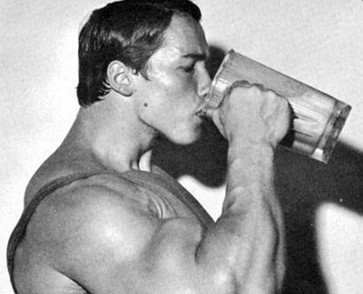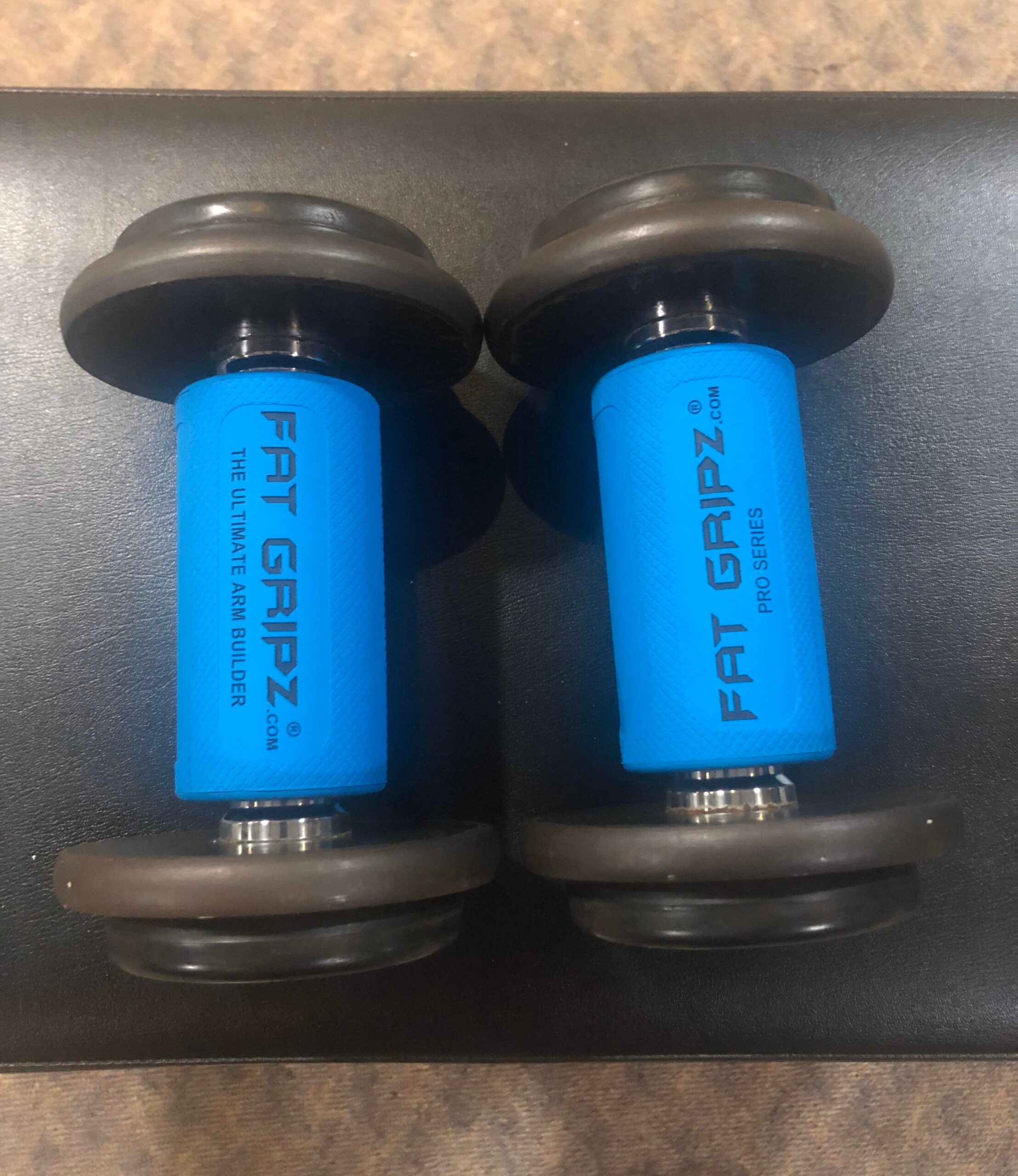How to Bulk Up Fast (50 Tips for Skinny Guys)
Below are 50 tried-and-tested tips for hard-gainers and skinny guys wanting to bulk up (and thus increase muscle hypertrophy and strength).
1. Limit your cardiovascular and aerobic activities. Some cardiovascular exercise will help to maintain your aerobic ability during the bulking phase; however, moderate to high amounts of cardio will burn excessive amounts of calories, limiting weight gain.
2. Train intensely and to failure. A high-calorie environment with a surplus of nutrients allows for maximum effort in the gym and optimal recovery. Training to failure increases motor unit activation and the release of anabolic (muscle-building) hormones such as testosterone and human growth hormone.
3. Focus on heavy and intense compound exercises. Many skinny guys waste their time on isolation exercises; however, for maximum mass, focus on multi-joint exercises that stimulate more muscles simultaneously. Squats, deadlifts, bench pressing, overhead pressing, rows, chins, etc. These free-weight exercises are also proven to secrete more testosterone and human growth hormone (1).
A small number of isolation exercises may be added, but compound exercises should make up the majority of a training split.
4. Eat irregularly. Although some people suggest eating every few hours, doing so elevates the metabolism and increases BMR (basal metabolic rate). Thus, by eating more frequently, you will need to consume higher quantities of calories to gain weight. The main problem skinny guys face when bulking up is that their metabolism is already fast, so speeding this up further is counterproductive.
By eating irregularly, the metabolism slows down, making it easier to eat with a caloric surplus.
Sumo wrestlers are the kings of bulking and adopt this strategy, eating two meals per day. They typically skip breakfast, having their first meal at noon and their second meal in the evening.
Their meals usually consist of chankonabe (a stew made up of fish, vegetables, tofu, and meat), accompanied by several bowls of rice and copious amounts of beer.

Do not fret about entering a catabolic (muscle-wasting) state by not eating every 2–3 hours. This seemingly universal recommendation in bodybuilding is unnecessary, with sumo wrestlers being the most muscular athletes on the planet (2), with higher levels of fat-free mass than pro bodybuilders.
5. Eat a lot. Adding to the last point, each meal or ‘feast’ that sumo wrestlers consume consists of 2,000–3,500 calories. Bulking up requires gaining weight, which requires a calorie surplus. Food is anabolic.
6. Eat dirty if necessary. We find that ‘hard gainers’ often benefit from adding cheat meals to their diet to increase their overall calorie intake. It is difficult to eat 4,000 calories worth of chicken and rice, but this becomes considerably easier with the addition of a pizza or a burger and fries.

7. But on the whole, eat lots of clean food sources. Gaining quality weight will require quality nutrients, including high quantities of protein, unsaturated fats, and unrefined carbohydrate sources. We have seen cheat meals aid a “hard gainer,” but it is still important to eat food sources that enhance protein synthesis and restrict fat storage (via less regular spikes in insulin).
8. Use negative reps. This is when a training partner takes the weight during the positive/concentric phase of the repetition, while the trainer takes the full load on the negative/eccentric phase. The negative phase is typically performed in a slow and controlled manner. Those who utilize this training methodology may experience significant DOMS (delayed-onset muscle soreness) the next day.
9. Increase protein intake to 1.5–2 g/lb of body weight. Protein is vital for muscle building and enhancing nitrogen retention inside the muscle cells, thus creating an optimal anabolic environment and encouraging the facilitation of new muscle tissue.
10. Increase carbohydrate intake to 2–3 g/lb of body weight. Lots of energy is needed for heavy and intense training sessions, as well as recovery (helping muscle tissue to repair and enlarge).
11. Eat plenty of nuts, seeds, natural oils, and oily fish. “Good fats,” otherwise known as unsaturated fats, aid in hormonal production and regulation, increasing testosterone levels (3). Fat is also very calorie-dense, increasing the likelihood of eating in a caloric surplus.
12. Consume whey with milk directly after training. Whey protein is quickly absorbed, making it ideal during the post-workout phase, where the body acts as a sponge. 30–40 grams of whey in full-fat milk will help to increase protein synthesis, replenish glycogen (due to lactose sugars present in the milk), and bolster calorie intake.

13. Add maltodextrin and dextrose to your post-workout shake. If individuals have problems digesting milk and prefer to consume whey protein powder in water, they can add 40 grams of maltodextrin or dextrose to a post-workout shake. We find this provides rapid replenishment of glycogen stores.
14. Perform “drop sets” to blast through plateaus. Perform a set until near failure with a given weight, then immediately decrease the weight and rep again to failure.
15. Stop relying on supplements. There is nothing wrong with taking a few supplements to aid the bulking process (which we will list below). However, skinny guys who take a dozen supplements and rely on them have the wrong mindset in regards to what it takes to gain weight.
16. Try supplementing with creatine monohydrate or CEE. Creatine is an amino acid that increases intracellular fluid retention (ATP), muscular size, strength, and protein synthesis. This can help overload the muscles, causing moderate increases in lean mass. However, we have had some reports of creatine monohydrate raising blood pressure in certain individuals, so it would be wise to monitor this during supplementation.
17. Reduce caffeine consumption. Taking pre-workout supplements, drinking coffee, or consuming energy drinks promotes weight loss due to caffeine spiking a person’s metabolism.
18. Be patient. Adding quality mass takes time, and trying to rush this process may lead to excessive gains in body fat.
19. Relax during the day. Decreasing activity and increasing rest will lead to less calorie expenditure, helping the body recover from intense workouts.
20. Sleep well. Aim to sleep for at least 7-8 hours each night. Sleep deprivation is one of the main causes of elevated cortisol and decreased serum testosterone levels (4). This creates a catabolic environment where muscle loss can occur as well as fat storage in stubborn areas.
21. Stop stressing. Stress has the power to inhibit muscle gains; thus, try to detach from any stressors in your life or take 1,000mg of vitamin C daily, which has been shown to significantly lower cortisol levels. We also find that when cortisol levels drop, adipose tissue in stubborn areas also decreases.
22. Train where you feel most motivated. Some prefer to train at home alone. For others, the gym is needed to mentally prepare them for a workout (plus, there is usually a wider range of exercise equipment available).
23. Consume liquid calories if you are struggling to consume sufficient calories from food. Smoothies with peanut butter, yogurt, whey protein, etc. are easy to consume, and they are packed full of calories and nutrients.
24. Prepare meals before work or school so you can have a constant source of food with you. This is especially helpful for people with busy schedules.
25. Do not be afraid to lose your flat stomach or six-pack abs. Bulking up will result in higher levels of subcutaneous body fat due to the consumption of surplus calories.
26. Take measurements to monitor progress. If individuals aren’t gaining significant size on their chest, arms, and thighs but are gaining plenty around their waist, adjust calorie intake by eating in a smaller surplus. Not gaining any size? Do not be afraid to up the calories.
27. Purchase a quality weight gainer, or MRP. Some weight gainers contain 1,250 calories per serving (such as Optimum Nutrition’s Serious Mass), which is considerably higher than the average protein shake’s meager 100 calories (approximately).
28. Leave a glass of casein protein or mass gainer in the fridge and consume it if getting up during the night for the toilet. This is an easy way to increase calories and is suitable for individuals who cannot consume enough food in just two meals and thus need to take advantage of every opportunity to cram in more calories.
29. Snack on fruit and nuts in between meals if needed. Fruit will supply the body with necessary vitamins and minerals, with nuts being a good source of fat and protein.
30. Try a testosterone booster. Low testosterone individuals often have ectomorph body structures; thus, experimenting with a testosterone booster may give a significant rise in free testosterone, producing notable increases in lean muscle. An effective testosterone booster should contain D-aspartic acid, ginseng, and ashwagandha.
If a man’s testosterone levels are already high, taking a testosterone booster is unlikely to help them gain noticeable amounts of weight. Realistic results should be expected; testosterone boosters will not increase muscle to the same extent as anabolic steroids.
31. Lower repetitions are not needed for “mass gaining”. The repetition range optimal for muscle hypertrophy is 8–12, although it would be wise to experiment with various repetition ranges to see what works best for you and to continue shocking the muscles.
32. Join a quality bodybuilding forum. Look for quality bodybuilding forums such as Bodybuilding.com, MuscleTalk.co.uk, or UK-Muscle.co.uk. Forums are a great place to ask questions and learn from others.
33. Write out a shopping list prior to going to the supermarket (and double check it against a bulking meal plan), ensuring you buy the quality foods needed for bulking up. Impulsive buying may lead to forgetting a food item, not buying the correct quantities, and filling your basket with unedifying foods.
34. Practice imagery. If you have a set goal of someone’s physique you would like to emulate, put a poster of them on your wall, set your phone background to them, or before you train, watch videos of them lifting weights. All three of these will enhance visualization and motivate you to achieve your desired weight or physique.
35. Avoid pro-hormone products and steroids unless you completely understand how they work, the risks, and the possible side effects. Note: We do not endorse the use of illicit substances; we have seen them wreak havoc on our patients’ health.
36. Add mayonnaise to your diet. Mayonnaise is an excellent source of unsaturated fat and is high in calories. It can also increase good cholesterol (HDL), helping to protect the heart due to its rich polyunsaturated and monounsaturated fat content. If you currently eat tuna, add mayonnaise to it or apply it as a base to sandwiches to increase calories.
37. Account for water gain. When a person initially increases their calories dramatically, water retention often follows (as quickly as overnight). However, when bulking ceases, this water will flush out again. Thus, if you want to gain 10 lbs of lean muscle and gain 5 lbs overnight, you may want to adjust the target total to 15 lbs instead, accounting for such temporary fluid.
38. Go to your local butcher and fishmonger for your shopping. When buying in large quantities, many local butchers and fishmongers end up being cheaper with higher-quality products.
39. Be prepared for comments from your partner and family members about “getting fat”.
40. Use a Fat Gripiz. These small rubber attachments increase the diameter of a dumbbell or barbell handle, increasing muscular contractions. These can help users become stronger and gain more mass in upper-body muscle groups due to overloading the muscles with a new adaptive stimulus. In our experience, training with Fat Gripz is one of the easiest ways to overload the muscles and add new muscle tissue.

41. Be realistic. Adding 20 pounds of muscle usually takes a lot of time and effort. Understand that the bulking phase will likely lead to some fat gain, and the amount of muscle that can be gained each week is limited.
42. Increase training frequency. If you want to bulk up a certain muscle group, train it more often to increase muscle nuclei inside the cell. Overtraining is real; however, it applies to the central nervous system (not specifically to muscles) and is largely exaggerated in bodybuilding.
43. Increase workout duration. Intense workouts can only go on for so long without reaching a state of overreaching. However, many weightlifters leave the gym after 30–45 minutes without really breaking sweat. Increasing workouts to 1 hour will place greater stress on the muscle fibers, leading to increased hypertrophy.
44. Have a balanced training routine. You should be aiming to add mass all over; therefore, you need a workout plan that stimulates all the muscles of the body. Purely focusing on smaller muscle groups, such as the arms and shoulders, will lead to an imbalanced physique as well as hinder overall mass gains.
45. Stretch intensely post-workout in an attempt to stretch the muscle fascia. The fascia is a sack that holds the muscle in place, and many bodybuilders perform intense stretches and have deep tissue massages to reduce the constrictiveness of this tissue, promoting further growth.
46. Perform “forced reps” to train past failure and shock the muscles. This training method should be used sparingly but is suited for a bulking plan where calories, energy, and nutrients are plentiful.
47. Try a mini-training cycle to ensure continuous change to the stimulus. This may involve week 1: low repetitions (1–4 reps per set), week 2: low repetitions (4–8 reps per set), week 3: moderate repetitions (8–12 reps per set), and week 4: high repetitions (12–16 reps per set).
48. The pump is not an ego trip. We have seen many trainers and members of online communities play down the pump and label it as a short-lived phenomenon. The pump is actually a highly anabolic process where myofibril hydration is high and protein synthesis takes place.
49. Remember to invest in some larger clothes!
50. Continue to educate yourself. Follow the top bodybuilding and fitness websites, read books, and continue to research different methods of nutrition, training, rest, and supplementation. Knowledge is power.
References
(1) https://pubmed.ncbi.nlm.nih.gov/24276305/
(3) https://pubmed.ncbi.nlm.nih.gov/33741447/
(4) https://pubmed.ncbi.nlm.nih.gov/34043794/
Inside Bodybuilding is a team of medical professionals and physicians with specialized knowledge and experience regarding bodybuilding and PEDs.



